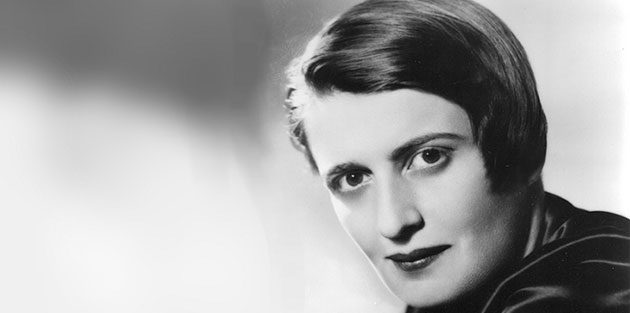Third World Objectivism: A Young Indian Reflects on the Meaning of Rand on the anniversary of her death by Shanu Athiparambath
Ayn Rand died on this day [March 6th], 32 years ago. Today, young Indians are snapping up her books at a surprising rate.
It’s an apparent contradiction. Howard Roark, The Fountainhead’s main character, is a man with strong principles. But he’s also arrogant. Here in India, humility is considered the fundamental moral virtue. He might have been put away for a very long time had he lived here. In any event, he could not have reached many people through rational arguments, due to what Rand described as “the mystic muck of India.”
But, for many young Indian men and women, Howard Roark epitomizes individualism and strength of character. And much to the chagrin of their boyfriends, many women want their men to be more like Howard Roark. A college mate once told me, “Women do not know that it is not possible for a man to be Howard Roark. He can only pretend to be Howard Roark. Hell, he can’t even pretend to be Howard Roark.”
It’s strange. For nearly four decades after Indian independence, every aspect of the Indian economy was “planned” and “regulated” by the socialistic state. The economy has liberalized somewhat in the past two decades, but still remains one of the most controlled in the world.
Virtually every literate Indian has heard of Karl Marx. And so, the typical Indian’s beliefs are much closer to that of Karl Marx’s.
Outside the market niche she has found, Ayn Rand is virtually unheard of. But that appears to be changing. Ayn Rand outsells Karl Marx sixteenfold in India today, which suggests rapid growth. This is in all likelihood an underestimation: I first noticed her works in a rickety street stall in a small town. The copies were pirated.
No one seems to know why Ayn Rand is becoming so popular in India. India has a huge population, but even today, English-language fiction is read by a minority elite. It is true that Ayn Rand wrote popular fiction. Karl Marx’s prose is dense. But that still does not explain why Rand outsells even many well-known Indian writers and best-selling western writers in Indian markets. Even in the United States, where various strands of thought have found their own niche, Rand’s views are considered way outside the mainstream. It is a minor miracle that she could build a whole movement in a western capitalistic democracy. But why is she becoming increasingly popular in societies that bear no resemblance whatsoever to whatever ideal society she had in her mind?
I can only hypothesize. But part of the reason must be that the intelligent young men and women in traditional, conservative societies know that the dystopian world her fiction depicts is not too unlike the world in which they live. Indians have experienced the extremities of government tyranny firsthand. Libertarians often cite the government as the source of evil, but not all evils flow from the State to the masses. The inept, corrupt governments of the third world can be a reflection of the popular soul. In India, at least, the State can institutionalize the little people’s vices.
In The Fountainhead, Peter Keating’s mother dictates his life with the sweetest of smiles on her face, “Petey, I never think anything. It’s up to you. It’s always been up to you.” The villain in The Fountainhead is Ellsworth Toohey, a manipulative intellectual, and not a government bureaucrat or a politician. One character says Gail Wynand represents everything that’s wrong with the world, but Wynand is a newspaper publisher. People subscribed to The New York Banner because they preferred vulgarity over truth and beauty, and not because the politicians or bureaucrats forced them to.
Ayn Rand was one of those writers who saw politics for what it is—inside and out, macro to micro, down to the level of the individual.
It is probably futile to curse mediocrity, but in the third world, ineptitude and politicking reach epic proportions—and is present in nearly every aspect of our lives. As in Ayn Rand’s fiction, this is not always official, congressional politics. It is true that many rebellious Indian teens find Ayn Rand’s individualistic worldview appealing. But, I believe they also feel that the world around them reminds them of the poolroom that Gail Wynand once worked in. That is, the young men and women in India see nothing but dishonesty and corruption around them.
Even in the best hospitals in the largest Indian cities, the doctors diagnose patients without really speaking to them. When you lie on a hospital bed, you know you have written a blank check to doctors who have life-and-death power over you. On November 9, 1965, the lights of the New York City and the entire eastern seaboard went out, an admirer wrote to Ayn Rand, “There is a John Galt.” But in India today, even in the largest cities, the lights can go out at any moment.
So, appearances aside, it is hardly surprising then that Ayn Rand appeals to young men and women in collectivist societies. She told them the truth about the world in which they live.
ABOUT SHANU ATHIPARAMBATH
Shanu Athiparambath is a writer and editor living in New Delhi.


